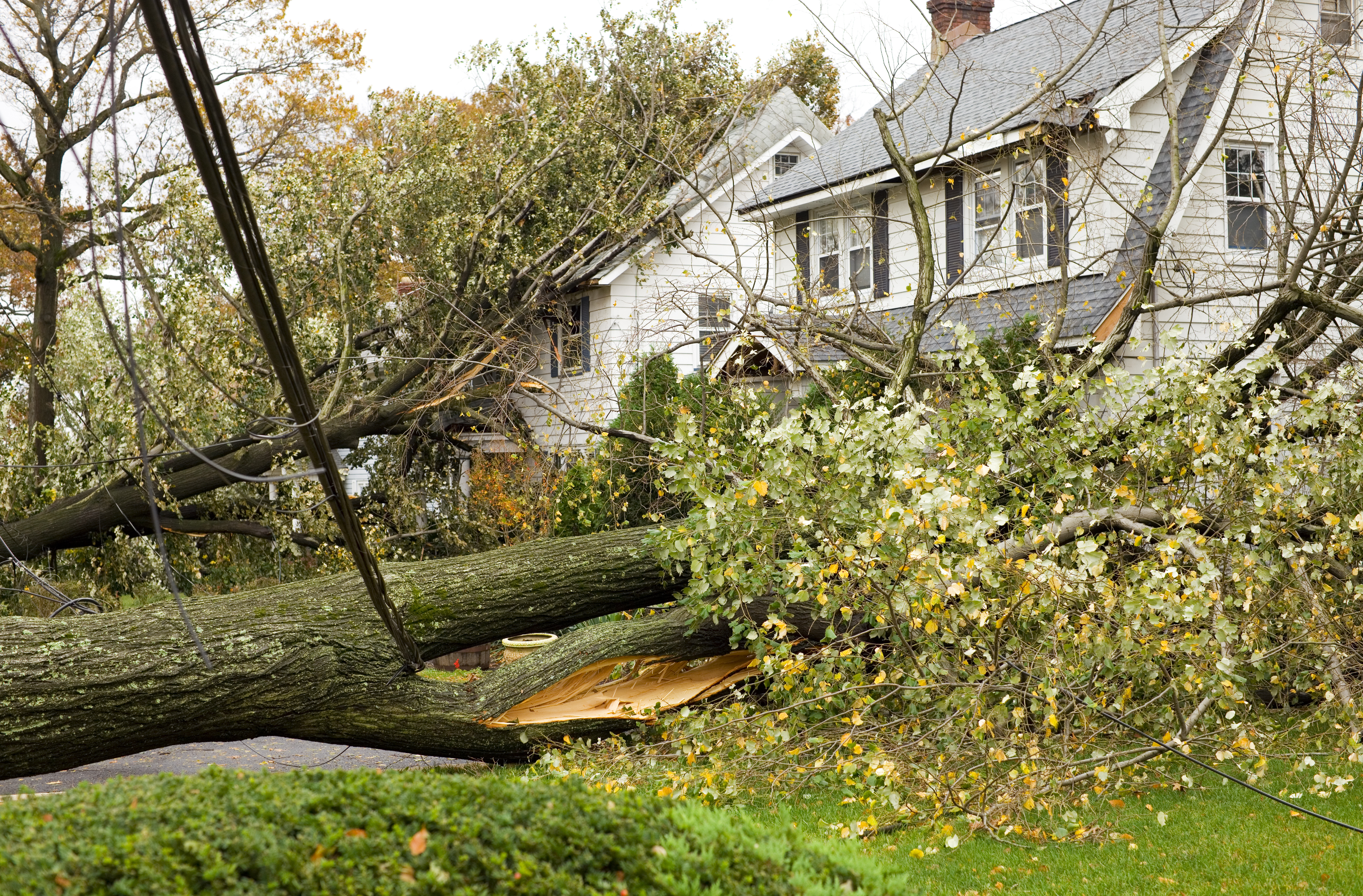Strong winds, heavy rain, and large hailstones are no match for solar panels. Engineers design these long-lasting panels to withstand outdoor elements and last at least 25 years. But what if you’ve included batteries to store the energy from your solar system? Those batteries sit either outside or in an indoor location like a garage in order to protect them from climate extremes.
Here's a closer look at how different weather patterns, including events like hurricanes and tornadoes, can impact the integrity and performance of your solar-plus-storage system.
How does weather affect solar-plus-storage?
Rain
Rain can be beneficial to solar panels, as it helps keep them clean. By washing away dust and dirt and preventing a buildup of grime, rain can actually improve the efficiency of your panels by ensuring as much sunlight as possible reaches their surface. Rain won’t impact battery storage systems rated for outdoor use.
Thunder and lightning
Solar panels installed on your roof are not magnets that attract lightning to your home, nor do they increase your risk of a lightning strike. However, lightning can hit any object and, while rare, it is one of the few weather events that can cause significant, expensive damage to solar panels and batteries.
A direct hit to a solar panel can break it entirely. Indirect lightning strikes that hit nearby objects, however, are much more common and can trigger electrical surges that can significantly damage panels and batteries.
Fortunately, you can protect panels and batteries from lightning using grounding to divert lightning to the ground rather than your panels and surge protectors, which either direct lightning to the ground or allow the surge to bypass wiring and components.
Hailstorms
Solar panels are resilient to hail. For example, Panasonic solar panels can withstand impacts from hailstones up to one inch in diameter. In fact, in 2017 an unusually severe hailstorm in Denver shattered car windows and left golf-ball-sized dents on the roofs of local homes and vehicles. But out of more than 3,000 solar panels installed on the roof of the city’s National Renewable Energy Laboratory, only one broke due to the storm.
Strong winds
Most solar panels can resist wind speeds as high as 140 mph. Damage to solar panels in high winds is usually the result of poor installation or a weak roof rather than the panels themselves. Flying debris can also cause damage, though solar panels have proved to be remarkably resilient, as demonstrated in the 2017 Denver hailstorm.
Snow and sleet
Thick snow that sits on your panels for several days or weeks will prevent sunlight from reaching the panels’ surface, therefore reducing their ability to generate electricity. If this happens, you can use a long rake from ground level to gently remove snow. Similar to rain, snow sliding off your panels can be beneficial, since it will remove any debris at the same time.
Clouds
Solar panels continue to generate power even in cloudy weather, though their output isn't quite as high as on a sunny day. Typically, it's about 10 to 25% of the solar panel’s normal power output. This is where batteries come in, enabling homeowners to store surplus electricity on sunny days for use on cloudy ones.
Temperature extremes
Like all electrical equipment, solar panels and their batteries are susceptible to extreme heat and cold, which can negatively affect both their performance and lifespan. Solar panels tend to work best between 59 and 95 degrees Fahrenheit. For batteries it's 50 to 86 degrees Fahrenheit. Temperatures outside these ranges will hamper your panel and battery performance.
If you live in a region that regularly experiences particularly high or low temperatures, it's definitely worth installing your battery indoors to help prolong its life.
Extreme storms
Hurricanes and tornadoes can see wind speeds reach 200 mph. In hurricane-prone areas such as Florida and Texas, local governments often require solar installers to test their panels and racking equipment to ensure they remain anchored in high winds.
When Hurricane Florence surged across the Carolinas in 2018, more than 1 million people lost power. Yet solar installations were operational the next day, and Duke Energy, the region's main utility provider, reported no damage to its solar farms.
How do power outages affect solar-plus-storage systems?
Solar panels without storage do not continue to generate electricity in a blackout. That's because solar panels are connected to the local grid, and they automatically shut down to ensure utility workers aren’t exposed to energized wires as they try to restore power.
Enter battery storage. Batteries are not connected to the grid. Instead, they capture and store surplus solar energy from your panels for use at a later date of your choosing. This means you can still tap into stored solar power from your battery when bad weather causes a power outage.
Do warranties protect against damage from weather events?
Most solar-plus-storage manufacturers do not cover damage to your panels from extreme weather events that are out of their control, such as hurricanes, earthquakes, or floods. The good news is that solar panels are exceptionally durable and can withstand most weather events. And should any damage occur during a storm, many homeowner insurance policies do include solar panels.
There is so much to consider when designing and installing a solar-plus-storage system for your home, and this includes your local climate.
Working with an experienced and vetted solar installer will ensure your system not only meets the specific energy requirements of your household, but also remains resilient against local weather patterns. Learn more about how Panasonic can help you find the best solar-plus-storage system for your home.





